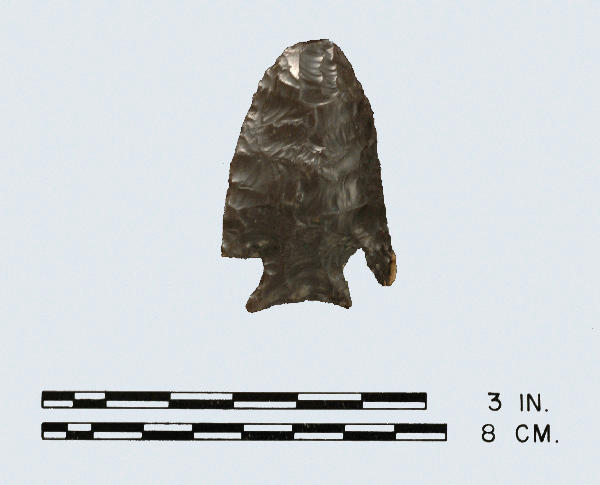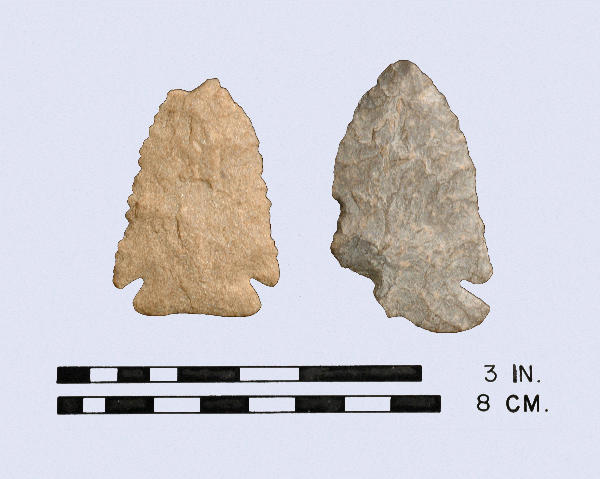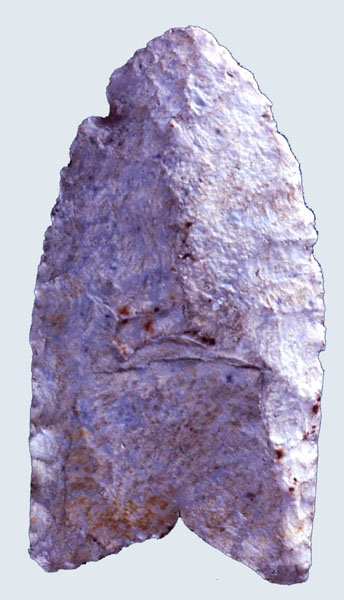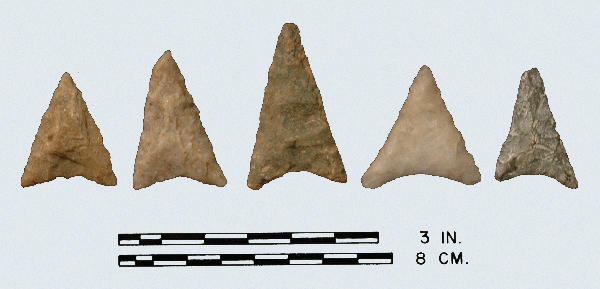Charleston: 44RU0014, chert.
Charleston: quartzite, chert.
Type Corner Notched Early-Archaic
Defining Attributes
The Charleston is a small to medium sized point with corner notches, an obliquely flaked blade and serrated edges.
Chronology
The Charleston point dates to the Early Archaic period, 8000 to 7500 BCE. At the St. Albans Site in West Virginia, Broyles (1971) obtained a radiocarbon date from a feature associated with this point type which dated to 7900 BCE.
Description
- Blade: A recurvate blade with a medial ridge formed by oblique flakes running toward the base. Oblique flaking occurs only on one of two sides, the reverse being covered with both oblique and random flakes. Blade edges are serrated, and shoulders are terminated in expanded shoulders, probably a result of re-working, which also produces the recurvate or incurvate blade edges. The blade has a lop-sided appearance due to the broad, off centered tip which has been thinned by several small flakes.
- Base: The stem expands toward the base, leaving corner notches from 5 to 8 mm wide and 4 to 8 mm deep. The sides of the stem are straight or slightly convex and the corners are rounded. Bases are either flat or convex, and thinned by several small flakes. Bases are smoothed (not heavily ground), the smoothing extending only across the basal edge of the stem.
- Size: Length ranges from 30 to 65 mm. Width ranges from 25 to 35 mm. Thickness ranges from 5 to 9 mm.
- Technique of manufacture: Bifacial percussion flaking; oblique flaking occurs only on one of two sides, the reverse being covered with both oblique and random flakes. Blade edges are serrated and bases have been thinned and smoothed. Corner notches were formed by removal of one or two large flakes from both faces and many small ones near the corner of the stem and the shoulder.
Discussion
McAvoy (1997) defines a similar type from sites along the Nottoway River which he calls the Deep Notched Palmer. The Deep Notched Palmer is a medium point with deep, narrow notches, a straight to excurvate base, and often serrated blade. Benthall (1990) excavated a similar point from the lowest level of Daugherty’s Cave in Russell County, Virginia dated to 7840 BCE.
Defined in Literature
Broyles (1971) originally defined this type based on points recovered from the St. Albans Site in Kanawha County, West Virginia.
References





